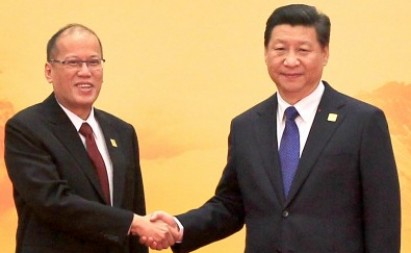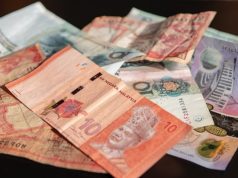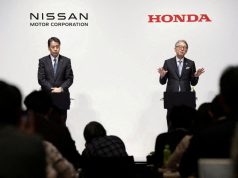
(Editor’s note: In view of the presentations made by the Philippines before the UN arbitral tribunal on the country’s suit against China regarding the West Philippine Sea territorial dispute, key aspects of China’s history can help produce insights into the dynamics of the rising superpower’s possible future relations with its neighbors, specifically the Philippines. Author Cesar Polvorosa Jr. is a business school professor of economics, world geography, and international business management in Canada. He is also a published writer in economics, business, and literature.)
Read Part 1 of 4, ‘21st Century will be the Pacific Century’ here.
As China’s economy propelled its meteoric rise in the current era the debates among historians, economists, and China watchers had been: What kind of superpower would China be? Would it be benevolent or would it be an aggressive authoritarian state? Even Chinese officials were sensitive to the implications of the phrase, “peaceful rise” and preferred the term “peaceful development.” (China’s Peaceful Rise in the 21st Century: Domestic and International Conditions, Edited by Sujian Guo, August 2006)
The concerns are real for a resurgent China with its 1.4 billion people has the potential to dominate the world. Some argued, particularly the hawks of the US foreign policy circles, that it would be best to contain the rise of China. The mainstream view that evolved is that to guarantee a benevolent China it is best is to let it fully participate and benefit from a free market global economy. Surely, China will not do anything to imperil free trade from which it has prospered?
Representative of this highly optimistic view of China’s benign rise is the recent interview given by China expert Jacques Martin, who did not even consider the ongoing reclamation activities in the disputed territories in declaring the peaceful rise of China.
The agenda of mostly US businesses with their narrow vested interests and profit motives prevailed. Their companies would become more competitive with access to a huge market as well as slash their costs by using China as their production platform. This parochial motive is simply the logic of capitalism. The risks are the transfer of technology and that gradually, they are strengthening a potential superpower rival – but what is that to individual companies concerned with time bounded bottom lines? Free trade that can engender potential future competitors is the essence of capitalism.
Thus, in many areas, China is moving up the technology value chain. There is now an Airbus finishing plant in China. While it guarantees huge orders by Chinese airlines, both Boeing and Airbus concede that China will become a competing producer of wide body planes in about a decade. Apple for a time debated about whether to manufacture its products in China as they said they wanted to retain the jobs in the US. Eventually, they concluded that they have to locate their production platform to China in order to compete in international markets. The challenge is that especially in electronics, the technology has become so easy to download that the competitive advantage of a company (and a country) is now so fleeting.
China launched its “charm offensive” or soft power in winning influence throughout the world. Now that the country has gained sufficient power and prestige, the “hawks” in the power hierarchy are ascendant. The Chinese velvet gloves had been removed that revealed the iron hand inside.
In the late 1970s, there was a seismic shift from the inward looking self reliant strategy of Mao to the pragmatic, outward looking policies of Deng (“It does not matter if the cat is black or white as long as it catches the mice”). In this sense it mirrored some of the earlier similar power struggles in China that were to dictate a radical change in its trajectory – the era of Zheng He, the late 19th century and early and mid-20th century. This is one consequence of a tradition of authoritarianism – the policy stance frequently reflects the personal caprice and agenda of the authoritarian leader and his/her clique and faction.
In this era, China is using the fruits of capitalism to build a powerful war machine and as its history indicated, it will not hesitate to use it against other countries in pursuit of its foreign policy objectives. China is using its new wealth to flex its muscles that thus far, appears sustainable.
In contrast, from the 1950s to the 1980s the Soviet Union engaged the US in an arms race and eventually imploded because it had a weak and inefficient centrally planned economy. It was a case of “imperial overstretch” which validated Paul Kennedy’s (The Rise and Fall of the Great Powers) forecast of the decline of the Soviet Union.
The US forgets the lesson from its own historical experience: It was able to build up the world’s biggest military in the decades after it became the world’s biggest economy at the advent of the 20th century. It was able to influence the international financial structure and governance (World Bank and IMF) as it emerged as the only superpower after World War 2. Why should China be different as it rises to stellar heights?
Implications to the Philippines and the Region
An emerging hegemon and one that is especially in an aggrandizing strategy forces its smaller neighbors to ally with each other and seek the help of the superpower from outside the region, the United States as they seek to maintain the balance of power. A brave new world is now taking shape in the region and will have the following specific impacts:
1. Resurgence of Japan military. One vital plank of post war East Asia security is a restriction on Japan’s military spending to 1% of GDP for many years. Likewise, there was an explicit renouncement of war as an instrument of national policy as well as nuclear weapons. The external security threats emanating from the Soviet Union and North Korea would be addressed by the US. In actuality, Japan still had a powerful military because of the enormous size of the economy but a clear pacifist sentiment have taken hold such as restrictions on Japan military equipment exports. That is now rapidly changing because of the tensions with China over disputed territories. Japan is expanding its military cooperation with the Philippines and has indicated that it will provide the P3 Orion surveillance plane as well as 10 new patrol boats.
At the same time Japan is also on a soft power counter offensive with its new multi-billion dollar aid package to the Mekong region.
2. The Return of the US. The historical wariness of US imperialism has given way to the fear of Chinese military assertiveness and outright occupation of the disputed territories. The huge Chinese military advantage in the region had given an opening for a US Asian pivot. This comes after decades of nationalist posturing in the region which culminated in the American bases being kicked out of the Philippines. The US-Philippines Enhanced Defense Cooperation Agreement (EDCA) would not happen under a normal political environment in the region. The country should be wary though as the issue of Chinese actions in the region is just one aspect of the overall superpower relations between the US and China. There will be horse-trading as part of the great power calculus. What if China promises the US that they will be an active supporter of the coalition against ISIS provided that the US will cut them some slack in the South China Sea how will the US respond?
3. Philippine Determination and Building up of external defense. For decades the Philippines had the weakest external defense force among the major ASEAN countries as it concentrated on containing a domestic insurgency problem and relied on the US for the external defense. In 2005 the country retired the last of its F5s leaving the country without any fighter aircraft. But now there is a sense of urgency because of the aggressive actions of China. The country would be getting a dozen examples of South Korea’s FA-50 – a deal which would have been paralyzed in debates in “ordinary times.” The Philippine Navy is on a shopping list as well. Chinese belligerence has triggered an arms race in the region.
4. Alliances and the Possible Revival of SEATO. As the countries in the region, principally the Philippines and Vietnam, try to counter Chinese assertiveness they will increasingly discover the need for a stronger collective voice that simply cannot be articulated through ASEAN. It is primarily an economic and political organization which has members that may not wish to take active part in countering the moves of China in the region such as Thailand, Cambodia, and Malaysia and at the same time involve the active participation of non ASEAN members like US and Australia. Thus, it’s possible that there may be a revival of the Southeast Asia Treaty Organization (SEATO) which was founded in the cold war days of 1954 and became defunct in 1977 and whose purpose was the collective defense of Southeast Asia principally against communism. Likewise, if India felt threatened in the Indian Ocean there will be an impetus to join in a prospective revived SEATO. It will take though a lot of provocation from China for this institution to be revived as it will be a very forceful response.
5. Threat to free trade. A shooting war will have a devastating impact on trade in the region. As well known geopolitical analyst Robert D. Kaplan (Asia’s Cauldron, 2014) have noted that the South China Sea functions as the throat of the Western Pacific and Indian oceans – the mass of connective economic tissue where global sea routes coalesce. More than half of the world’s annual merchant fleet tonnage passes through these choke points and a third of all maritime traffic worldwide. This is not even considering the possible consequences of the discovery of massive amounts of oil as suspected by geologists. Thus, there is major strategic importance to control of the territories – and one therefore that involves not only regional claimants but likewise, the US as the superpower with a lot of stake in the unimpeded flow of trade.
6. AIIB and Growing Trade. Following the general pattern of bilateral trade relations worldwide, China is now an important trade partner of the Philippines. China is #3 export market of the country (after Japan and US) buying $8.03 billion of Philippine goods in 2014 (DTI). Meanwhile, Philippine merchandise imports from China in 2014 amounted to $9.69 billion.
Recently, there had been attempts to boycott Chinese goods to protest the belligerent actions of China in the West Philippine Sea. Refraining from patronizing Chinese goods is a form of symbolic protest that can be articulated eloquently to the world but let there be no illusion about its direct effectiveness. Philippine imports from China in 2014 accounted for 15% of the country’s total imports but only a minuscule 0.41% of total Chinese exports. It’s not going to hurt China not counting imports that are used as production inputs which can adversely affect Philippine industries. What if China retaliates by refraining from buying Philippine merchandise? At 13% of total Philippine exports, any Chinese move to stop buying Philippine goods will derail the Philippine economy. It escalates the bilateral conflict without accomplishing its objectives.
China has shown willingness of using its economic clout when it deems it necessary. For example, in 2010 China embargoed the exports of rare earth metals to Japan after a Chinese ship captain was captured by Japanese authorities in disputed territories.
Thus, there is apprehension in the Philippines about joining the AIIB which is being established mainly with Chinese capital. While the Philippines is badly in need of funding for infrastructure projects, the concern is that China will use its dominant position in the AIIB to influence the approval of loans and their conditionalities subject also to Beijing’s broader geopolitical agenda. There is precedence of course in the US and the complex discourse on the World Bank and human rights and other governance issues. Dangling a carrot is a powerful incentive but what about the strings attached?
7. Others. The rhetoric over the political dispute of the Philippines with China has stoked some tensions within the influential Filipino-Chinese community on questions about divided loyalties. While this is still a nascent issue there is a potential for this to escalate if in the future, Philippine-China relations continues to deteriorate. Thus, the taipans may be called upon to issue statements of support for the Philippines. Chinese reclamation activities in the region have also contributed to pollution especially critical in a fragile ecosystem.
There are naturally important distinctions but broadly, the resurgence of China echoes the historical trajectory of the US a century back: the build-up and rise to global prominence of a country through capitalism based on abundant human and physical factors. Then as now, a massive economic base enables the creation of huge and modern armed forces. Then the possession of bountiful resources enables the preeminent power, the United States to be instrumental in the creation and control of the World Bank. Now, the presumptive power China is doing the same with the creation of the Asian Infrastructure Bank (AIIB).
He who has the gold can buy the guns, lend money, and make the rules.









